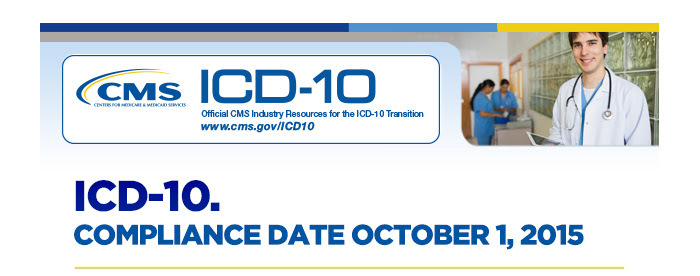 | ||||||||
News Updates | October 9, 2015
| ||||||||
Use ICD-10 Now – Here’s HowOn October 1 the United States health care community transitioned to ICD-10. CMS wants providers to be successful in using ICD-10 and remains committed to working with industry on the transition.
To give providers a quick reference, we’ve posted the Use ICD-10 Now infographic below on our website. (To access the links in the infographic, please use the version on our website.)

Coding Claims: When to Use ICD-10 versus ICD-9
Use of ICD-10 versus ICD-9 on claims is based on dates of service—not on dates that claims are submitted.
For example, if you submit a claim for services provided on September 30, 2015, use ICD-9, even if you are submitting the claim in October 2015 or beyond.
For hospital inpatient claims, use date of discharge rather than date of service to determine whether to code in ICD-10 or ICD-9.
Splitting Claims
Many health plans require claims with dates of service spanning October 1 to be split into two claims, one with ICD-9 and the other with ICD-10 codes.
A Medicare fee-for-service (FFS) claim cannot contain both ICD-9 codes and ICD-10 codes. Medicare will not pay claims containing both ICD-9 and ICD-10 codes. CMS has issuedguidance for providers dealing with claims spanning the compliance date.
Accessing Codes
See the ICD-10 Coding Resources fact sheet to find out about accessing ICD-10 codes, ICD-9/ICD-10 mappings, and clinical documentation tips.
Other Resourcess
Keep Up to Date on ICD-10
Visit the CMS ICD-10 website and Roadto10.org for the latest news and resources, including the ICD-10 Quick Start Guide. Sign up for CMS ICD-10 Email Updates and follow us on Twitter.
| ||||||||
 |  |  | ||||||
 |
| |||||||
Sunday, October 11, 2015
ICD-10 News: Use ICD-10 Now – Here’s How
Subscribe to:
Post Comments (Atom)
No comments:
Post a Comment